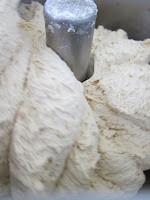This morning we had another lecture on French culture, this time concerning marriage and the French family. It was interesting to learn all about the programs the government has to encourage couples to have kids. The government awards parents allowances for each kid they have. Parents are also given 4 months of maternity leave along with a 1-3 year parental leave. During parental leave, the parent’s job is held and they are paid 60% of their regular salary by the government. Another interesting fact we learned was that a medical visit is mandatory before marriage. I can only imagine how a statute similar to this would be received in America.
After class, I took my oral French exam. A group member and myself had to present three impromptu conversations in front of an instructor. Hopefully the instructor was as proud of our performance as we were.
Sadly, our last class of the program was this afternoon. The professor spoke on the differences of French and American bread. We learned that the French government actually regulates what ingredients go into a baguette. For example, to keep prices low, the government forbids the use of powdered milk in baguettes. This was shocking to me that the government can regulate bakers’ recipes. Nonetheless, the French are doing something right. Their bread is like no other.
This evening we’re babysitting Timotheo. Our host parents are going to have a date night. Wish us luck!




















































